Competition exists in any niche. It’s an unavoidable challenge for any business.
But there’s one positive thing about having competitors: You can learn a huge deal from them.
And that is how you evolve and innovate your business, by having to constantly learn from and keep up with your competitors.
This article outlines one specific tactic to learn to convert your social media traffic: monitoring your competitors.
1. How to Identify and Monitor Your Competitors
When entering the niche, you are likely to know your major competitors well. Searching Google for your target keywords will give you even more ideas. When searching, make notes. Getting organized from the very start will save you lots of time going forward.
SproutSocial has a neat spreadsheet template to help you get your competitors in order.
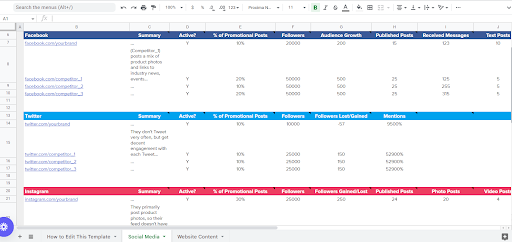
Keeping a spreadsheet makes it more scalable: when expanding your team, you’ll be able to hand your data to new team members easily. You can extend the spreadsheet beyond social media and also note competitors with creative CTAs or link acquisition methods. The more integrated your spreadsheets are, the better because no marketing channel is an island. These days, everything from link building to conversion optimization can either help or destroy your end result.
When adding more accounts to your spreadsheet, add your competitors’ name to your social media monitoring tool. Awario is a brand monitoring solution you may find helpful here because it makes monitoring very well-organized:
- You can organize mentions into alerts while keeping your “big picture” view over at your dashboard
- You can choose your data sources and keep all of them (which include Twitter, Facebook, Pinterest, Instagram, Youtube, Reddit, news/blogs and web)
- You can add mentions to “favorites” (which is my favorite feature because it keeps my team very organized) to keep track of most important ones
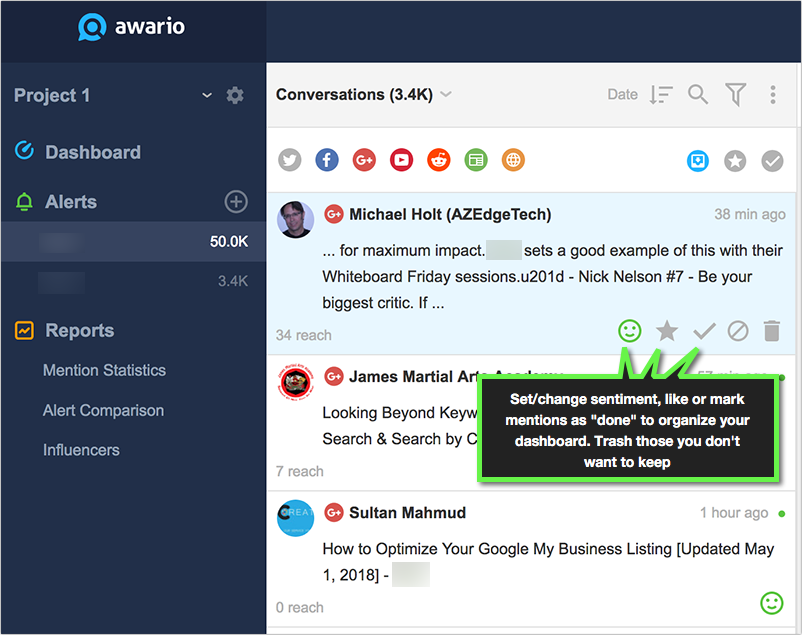
Once you have your spreadsheet going and monitoring dashboard set-up, you can proceed to understand the data:
2. Track Your Bigger Competitors and Build Your Social Media Editorial Calendar Around Them
Tactic: Research your competitor’s navigational queries and build your social media campaigns based on your findings.
That huge brand that is taking up most of the market share? Those probably aren’t the guys you should be looking to take down. Their customers aren’t as likely to be looking for a smaller alternative, and anyway, the company has the money, reputation and force of influence to shut you down.
It doesn’t mean you shouldn’t be paying attention. What your huge competitors can do for you is to provide data, LOTS of it.
While it may not be that easy to use your own data yet (if you are starting out, there’s not much to analyze), your bigger, more established competitors are being searched and discussed every minute.
Treat your biggest competitor name as your keyword: Research the context, questions and sentiment around it. Find angles you can use for your own marketing:
Check out my article on keyword research here to learn how to research your niche and navigational queries (those queries that contain your or your competitor’s brand name). It is also a good idea to run your competitors’ landing pages through on-page analysis tools, like WebCEO’s content assistant to understand which keywords they are focusing on.
Grouping your competitors’ navigational queries gives you an outline of topics to build your social media promotion around. Do you want to know what your competitors’ customers want most? See what they are searching for in Google. It is also a good idea to run your competitor’s name through Text Optimizer to understand niche associations and build your own content strategy around those:
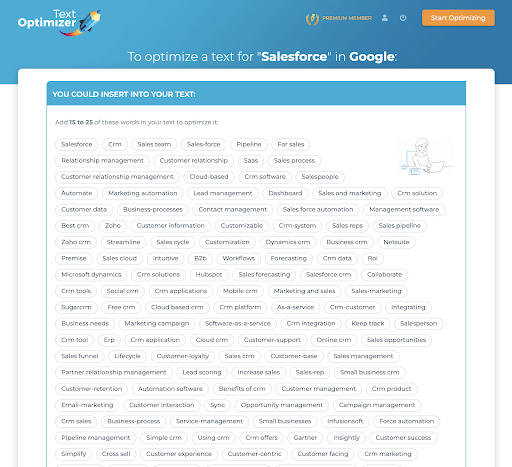
This type of research is the perfect first step to building your social media strategy as well as your set-up your on-site conversions elements. All you need to do now is to start addressing struggles and questions of competitors’ customers on your social media channels and you’ll have their attention!
3. Monitor Your Competitors’ Unhappy Customers and Be There to Help
Tactic: Monitor your competitors’ unhappy customers and steal them by helping them (as well as use them to improve your site and your product!)
This is one of the most under-utilized, yet the most effective (from experience) tactics: Don’t just monitor your own brand and your own customers. Include your competitors’ customers too!
Twitter is the perfect medium for this tactic for two reasons:
- It’s open, public and searchable
- It supports negative sentiment search
If you are unaware of the latter tip, try searching for the following:
[“your competitor name” 🙁 -from:@yourcompetitor]
- Keep the space between the brand name and 🙁
- Use “” if the brand name consists of more than one words
- Add -from:@yourcompetitor to filter out your competitor’s own tweets:
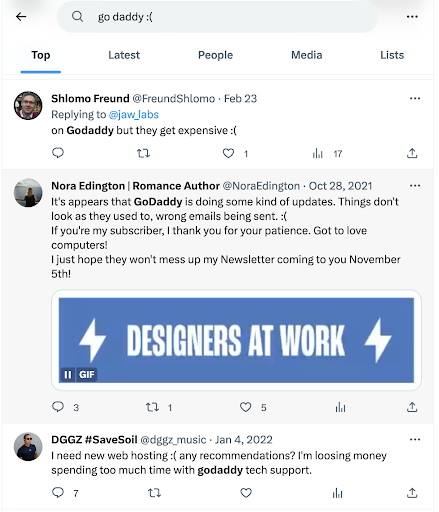
Now import this search to your Twitter engagement platform, and encourage your team to interact with each and every of them. No need to actually go ahead and offer your business as an alternative. Don’t oversell! Instead, be helpful and you’ll have much better results.
This kind of monitoring is also a good way to avoid mistakes your competitors are making. If you are selling alternative and similarly-priced products, chances are your customers may be unhappy for the same reasons. So this is a good time to change something and set up a more powerful selling point. These types of failed buying journeys can also be integrated into your chatbot workflows or IVR to quickly help your unhappy customers and win those sales.
4. Identify Your Competitors’ Most Successful Tactics on Facebook
Tactic: Investigate your competitors’ Facebook business pages, and see what works best for them.
Last but not least: use your competitor’s social media marketing successes for your own inspiration. There’s nothing bad in using others’ successful tactics—that’s what powers progress.
An easy tool to spy on your competitor’s facebook tactics and analyze them is Buzzsumo’s Facebook analytics tool. This tool will help you identify your competitors’ most engaging Facebook updates. You can use these to build up your own page engagement, and then use remarketing to get more out of your Facebook ads.
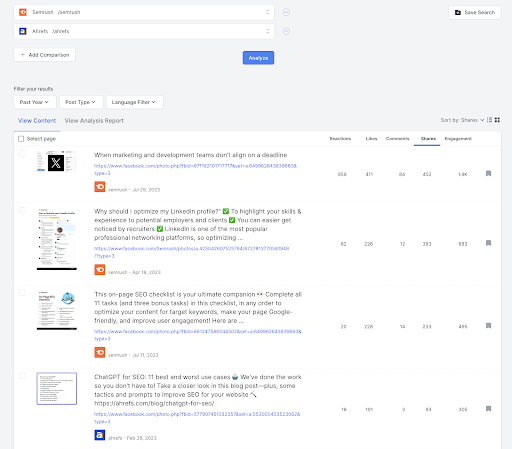
Input your competitors’ Facebook username, wait for the tool to generate updates, and then experiment with different sorting and filtering options:
- You can sort by overall number of interactions to see the most successful updates on top
- You can filter by type of content to see your competitors’ videos, images, links, questions, etc. It is a good idea to filter your competitors’ updates by ecommerce-focused content (giveaways, coupons, etc.) to identify which products they are pushing through Facebook.
- Filter by date to recent, successful updates
Now use these ideas to brainstorm your own updates, and put them into your own social media editorial calendar. These are just a few examples. I am sure using these ideas, you can come up with many more.
If you would like the Convince and Convert team to help you with audience research, contact us today.

